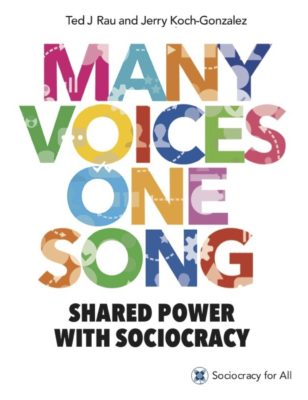Sociocracy is a governance method based on collaboration, self-organization, and distributed authority. It is designed for transparency, inclusiveness, and accountability. Democracy values freedom and equality but doesn’t have a governance structure guaranteed to ensure them. A Sociocratic Democracy uses the methods of sociocracy to achieve the values of democracy creating a practical and effective way to organize. This site is about sociocracy and the ways in which it can help democracy achieve its highest goal: freedom and equality for all, finally.
 Won’t the prescriptive Norms in sociocracy and the Constitution in Holacracy impose the rule of law, which will quickly devolve into the rule of lawyers? The more arcane and opaque the law is, the more tyrannical that law becomes.
My response to this requires a distinction between laws and policies. Laws and policies are the same in that both govern future actions and decisions. Laws are made by governments to govern the actions of citizens… Read More . . . “Laws and Policies: The Differences”
Won’t the prescriptive Norms in sociocracy and the Constitution in Holacracy impose the rule of law, which will quickly devolve into the rule of lawyers? The more arcane and opaque the law is, the more tyrannical that law becomes.
My response to this requires a distinction between laws and policies. Laws and policies are the same in that both govern future actions and decisions. Laws are made by governments to govern the actions of citizens… Read More . . . “Laws and Policies: The Differences”
